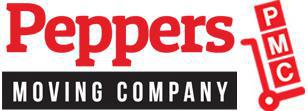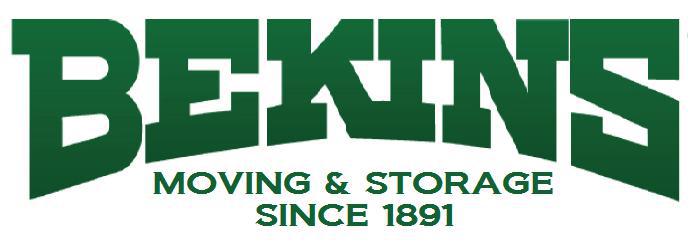LAST REVIEW
<QuerySet [<Review: N L., They made an EX>, <Review: Salina Murray, KEVCOR moving w>, <Review: Jackie Oglesby, Will never use >, <Review: A Vaughan, Five stars for >, <Review: A Vaughan, Five stars for >]>
5
1
4
Reviewed <QuerySet [<Review: N L., They made an EX>, <Review: Salina Murray, KEVCOR moving w>, <Review: Jackie Oglesby, Will never use >, <Review: A Vaughan, Five stars for >, <Review: A Vaughan, Five stars for >]> times,
customer satisfaction.
United States
Alabama
Vance
Five stars for a last-minute call for help and fine work. Kevin's help was much-needed after our original crew backed out with short notice. Upon recommendation from a friend, I called KEVCOR and - on a busy weekend - he obliged by providing an able-bodied and good-natured man for our ride to another state to collect estate items. (We'd rented a truck). Our family, along with our knowledgeable KEVCOR crew member, Paul, had the job finished and were back in BHAM at the storage unit within hours. Then, entirely unsolicited, owner Kevin Soles and two other of his brigade, appeared to help us unload. All communication was prompt and clear, with promises kept. His attitude was one of "we can and will accommodate." We can't recommend this company and its professional behavior enough. Thanks, KEVCOR!
LAST REVIEW
<QuerySet [<Review: S. Smith, Thank you much >, <Review: S. Smith, Thank you much >, <Review: Tange Awbrey, Absolutely terr>]>
5
1
4
Reviewed <QuerySet [<Review: S. Smith, Thank you much >, <Review: S. Smith, Thank you much >, <Review: Tange Awbrey, Absolutely terr>]> times,
customer satisfaction.
United States
Alabama
Lexington
Absolutely terrible business. They were scheduled to both pack and move our house. After 3 no shows, we called them and they told us they were out of town and said they could no longer help us. We were very patient with them and they knew full well we needed the help due to current medical issues we are dealing with right now. They treated us terribly and did not even provide us the courtesy of cancelling before they were a no show. Stay away from this business.
LAST REVIEW
<QuerySet [<Review: Eric Donaldson, Gold country Te>, <Review: Chris K., These folks min>]>
5
1
4
Reviewed <QuerySet [<Review: Eric Donaldson, Gold country Te>, <Review: Chris K., These folks min>]> times,
customer satisfaction.
United States
Alabama
Lexington
These folks minded and they hustled. Most vital they set up our beds together first thing so regardless of what we had a spot to crash after such intense day.
I would dare to say the left our furniture superior to anything they discovered it. For instance, John would pull a pack of learned about stickers of his pocket and supplant/put in new ones on every one of our pieces as they set things in the new home. All the more then once they wiped off or got out the dust or cobwebs that show up when huge pieces get moved. My wife was extremely worried around two huge Ethan Allen pens we had as of late obtained, however they secured them with cushions that were held set up with immense elastic groups and all was great.
The other two folks and their truck truly had some flawed valuing plans. They additionally had an excess of standards and regs about each seemingly insignificant detail. It felt irritating before it began.
Pepper's likewise let us box and move as much as we needed even after they had come and cited the occupation. We expected to spare some cash and had room schedule-wise so we moved things before they touched base to hold our expense down. James called us the prior night to check whether we had any worries and even offered to defer the moving date, with no expense, as overwhelming precipitation was moving in. They put down spongy runners through both houses so the new cover and hardwoods were completely secured. These young fellows felt reliable every step of the way - I figure I can't say enough.
LAST REVIEW
<QuerySet [<Review: Alicia P, I would not pre>, <Review: Justin O., They were extre>]>
5
1
3
Reviewed <QuerySet [<Review: Alicia P, I would not pre>, <Review: Justin O., They were extre>]> times,
customer satisfaction.
United States
Alabama
Vance
They were extremely circumspect of her and ensured we knew they had everything close by. Furthermore, they're FAST!!! All out move time from our two room apartment suite to the next house... 3 1/2 hours! Appraisal was spot on the nose. Ace Tip: there is a base drive time of 30 minutes (doubled)... So a hour of drive time considered into our 5 hour gauge. And still, after all that the aggregate time was 4 1/2 hours, so they completed in front of timetable.
LAST REVIEW
<QuerySet [<Review: Moving Authority, Congratulations>, <Review: W. Henderson, These guys are >]>
5
1
4
Reviewed <QuerySet [<Review: Moving Authority, Congratulations>, <Review: W. Henderson, These guys are >]> times,
customer satisfaction.
United States
Alabama
Lexington
These guys are amazing. Their level of professionalism, experience and work ethic are excellent. They packed everything I had perfectly with the highest level of care and attention. I cannot recommend them highly enough!
LAST REVIEW
<QuerySet [<Review: Pamm B., This was the se>, <Review: Tracy A., We've utilized >]>
5
1
4
Reviewed <QuerySet [<Review: Pamm B., This was the se>, <Review: Tracy A., We've utilized >]> times,
customer satisfaction.
United States
Alabama
Seale
We've utilized a couple of various moving moving company throughout the years all around L.A. what's more, Walter's Transfer was by a wide margin the best. For our last move I got three unique quotes from different moving company and Walter's had the best cost and no shrouded expenses/counterfeit surcharges...plus they had the biggest truck. On moving day they appeared on time and gave all the closet boxes I required at no extra cost. There were 3 movers absolute, however Frank the "head mover"/manager of the other two folks was marvelous. He was so proficient and kept things moving at an enduring pace. He has years of involvement with this organization, and he said the proprietor was an incredible gentleman to work for (I really conversed with the proprietor on the telephone when I got the quote and he did appear like a decent fellow). Moving can be truly distressing and doesn't generally go as arranged, however this time it went shockingly smooth. One of my bookshelves did get harmed, yet for the most part since it was shoddy and it wasn't generally their deficiency. General I profoundly prescribe this moving company and would utilize them once more.
LAST REVIEW
<QuerySet [<Review: Berlin Moore , Berlin here and>, <Review: Richard T, This organizati>]>
5
1
1
Reviewed <QuerySet [<Review: Berlin Moore , Berlin here and>, <Review: Richard T, This organizati>]> times,
customer satisfaction.
United States
Alabama
Vance
This organization is exceptionally questionable. They go about as thought they are helping us out and we are paying a huge number of dollars for a move. Their telephone and client administration sucks. They grabbed my furniture on October twelfth and I was assume to get is it on the 21st in Nevada. Come the 21st and this gentleman Joe that works in Dispatch converses with me such as he has no idea of anything and lets me know that the truck in departing south Florida today the 21st or tomorrow. I feel that I gave them all that anyone could need time to get this shipment right. After that I kept call ing to see what the status was on the driver and they have no clue on the driver. What sort of control and backing for their customers is this? Well I will let you know this organization is exceptionally untrustworthy considering that I have 2 little children and no furniture in my home for over a week. They basically have all that I claim. On the 28th, they come to me and offer me a markdown of like 5% which is around 150 off. That is watching over their customers right. well I believe that is a slap on the face with regards to benefit considering they totally dropped that ball. Correspondence with this organization is terrible and if the proprietor is perusing this he ought to be embarrassed about the administration they are giving their customers. By the way my bill was 4,200. Horrendous COMPANY! Try not to RECOMMEND THEM AT ALL!
LAST REVIEW
<QuerySet [<Review: Diane D, "David and his >, <Review: Anthony R., Used them to mo>]>
5
1
4
Reviewed <QuerySet [<Review: Diane D, "David and his >, <Review: Anthony R., Used them to mo>]> times,
customer satisfaction.
United States
Alabama
Vance
Used them to move apartments. Two man group came and moved me inside of 2 hours. The folks were respectful and watchful with all my stuff. No issues, got a rebate from a business card I had.
LAST REVIEW
<QuerySet [<Review: Ellen G, Movers made an >, <Review: alison c, This administra>]>
5
1
4
Reviewed <QuerySet [<Review: Ellen G, Movers made an >, <Review: alison c, This administra>]> times,
customer satisfaction.
United States
Alabama
Seale
This administration was WONDERFUL. I called and got an appt the following day. The folks appeared acceptable on time and were well disposed and gracious, the heap up was brisk and they completed everything in a matter of minutes (garbage pull away). The administration isn't modest, yet when you're moving and require stuff gone it's sensible - particularly since they do everything for you. I'd prescribe these folks instant.
LAST REVIEW
<QuerySet [<Review: Brooke Cardwell, Liberty moving >, <Review: Anonymous, These guys are >]>
5
1
3
Reviewed <QuerySet [<Review: Brooke Cardwell, Liberty moving >, <Review: Anonymous, These guys are >]> times,
customer satisfaction.
United States
Alabama
Vance
These guys are horribly ABUSIVE both financially & emotionally to ELDERLY people - are badly aggressive & THREATENING. ***Their services are far below standard ... BEWARE.
LAST REVIEW
<QuerySet [<Review: Arnold H., This was the fi>]>
5
1
4
Reviewed <QuerySet [<Review: Arnold H., This was the fi>]> times,
customer satisfaction.
United States
Alabama
Vance
This was the first occasion when I didn't hazard spinal damage by moving myself, and I'm so content with my choice! They cited me a reasonable cost, and adhered to it. I've amassed a significant accumulation of china throughout the years and had practically surrendered myself to the way that not every last bit of it would survive the move unscathed. It did! I will be utilizing SPARKS MOVING and STORAGE in the event that I move later on.
LAST REVIEW
<QuerySet [<Review: Moving Authority, Congratulations>]>
5
1
4
Reviewed <QuerySet [<Review: Moving Authority, Congratulations>]> times,
customer satisfaction.
United States
Alabama
Lexington
Congratulations of you becoming compliant with arbitration.
LAST REVIEW
<QuerySet [<Review: Moving Authority, Congratulations>]>
5
1
4
Reviewed <QuerySet [<Review: Moving Authority, Congratulations>]> times,
customer satisfaction.
United States
Alabama
Satsuma
Congratulations of you becoming compliant with arbitration.
LAST REVIEW
<QuerySet [<Review: Kristen M, Cash well spent>]>
5
1
4
Reviewed <QuerySet [<Review: Kristen M, Cash well spent>]> times,
customer satisfaction.
United States
Alabama
Seale
Cash well spent. We were going to lease a truck and attempt to proceed onward our own. I'm so happy we didn't. I had called different organizations and the quote I got from Motivated Movers was the least expensive, however the administration we got was first class. They moved us rapidly and the greater part of our stuff made it securely to the new house. The folks all had awesome mentalities and were useful getting everything set up. On the off chance that I need to move once more (and I genuinely trust I don't), I wouldn't dither to contract them once more.
LAST REVIEW
<QuerySet [<Review: Wendy T., The group appea>]>
5
1
4
Reviewed <QuerySet [<Review: Wendy T., The group appea>]> times,
customer satisfaction.
United States
Alabama
Seale
The group appeared on time and worked rapidly and effectively! Exceptionally proficient mentality! We had an exceptionally troublesome stairwell and they explored some extensive things deliberately and without harming our stuff!















